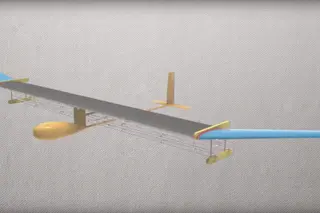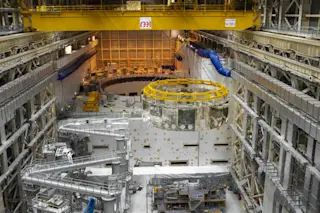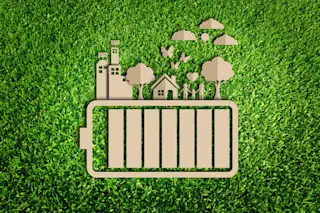Most drones today are noisy: The whine of motors and the hum of propellers produces an unavoidable din that instantly telegraphs their presence.
By contrast, the small plane that flew across an indoor track on the MIT campus this fall was eerily silent. Though its furthest flights were obviously powered, you could be forgiven for thinking it was some sort of trick. That’s because the plane uses an entirely novel propulsion system, one without even a single moving part.
Researchers call it an “ionic wind,” and the technology could offer a means of silently powering drones of the future, as well as being a potentially cleaner source of thrust for even larger aircraft.
The craft generates thrust with a pair of wires carrying electric current, set one behind the other. The wire in front carries an electric charge of extremely high voltage — 40,000 volts in this case — and ...














